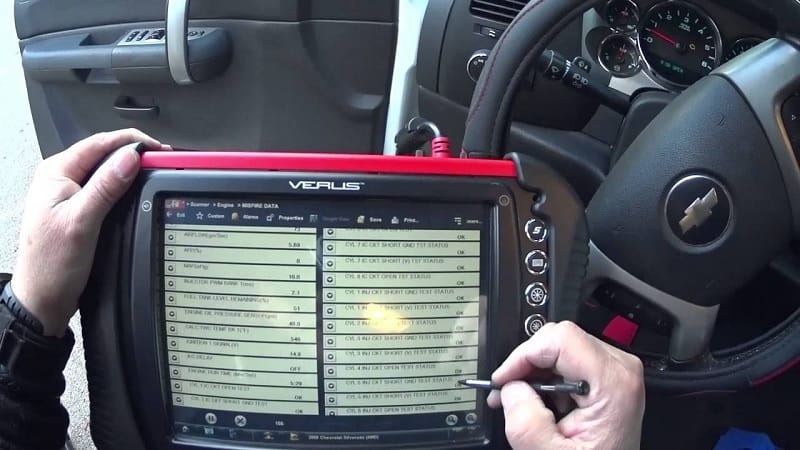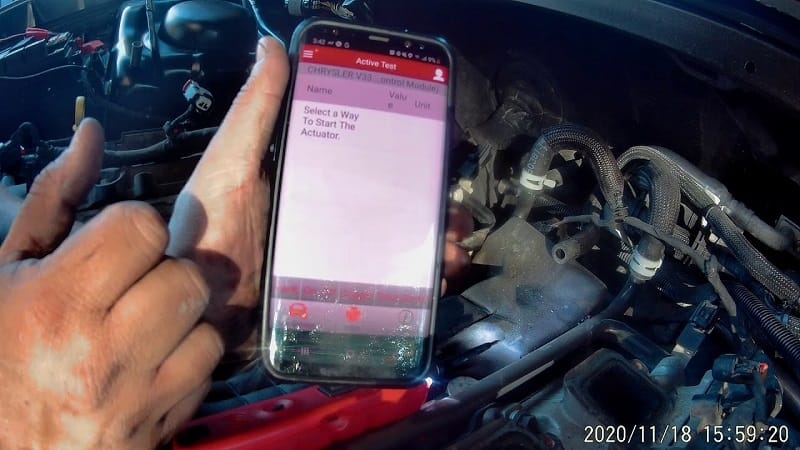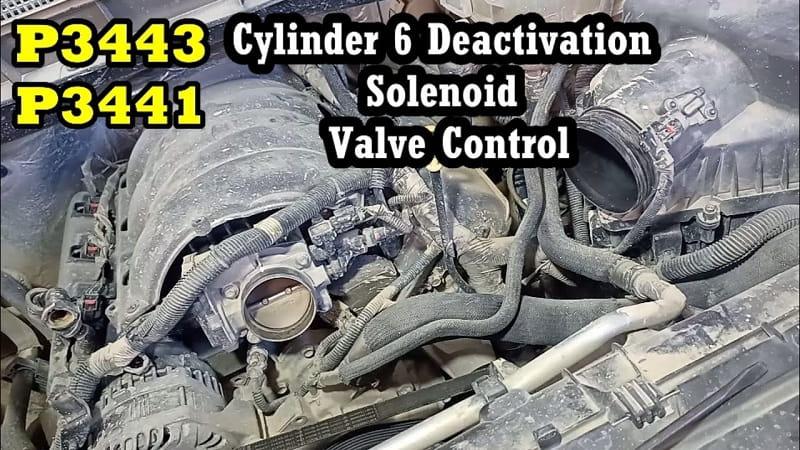This post contains affiliate links. This means I will make a commission at no extra cost to you should you click through and make a purchase [ “As an Amazon Associate, I earn from qualifying purchases.” ]. Read the full disclosure here.
Understanding DTC P3403: Cylinder 1 Deactivation/Intake Valve Control Circuit Low GuideMechanic.Com Modern engines, especially V-type configurations like V6 and V8, have evolved to prioritize fuel efficiency and emissions reduction.
One of the advanced features introduced to achieve this is cylinder deactivation technology. While beneficial, this system can develop faults, and Diagnostic Trouble Code (DTC) P3403 is one such issue specific to cylinder 1’s intake valve control circuit.
This article explores what P3403 means, how it affects engine performance, what causes it, and how to diagnose and repair it effectively.
See Also: P0000 Through P0099: Understanding OBD-II Trouble Codes
What Is DTC P3403?
Code Definition:

P3403 – Cylinder 1 Deactivation/Intake Valve Control Circuit Low
This code is set when the Engine Control Module (ECM) or Powertrain Control Module (PCM) detects that the voltage in the intake valve control circuit for cylinder 1 is lower than expected.
In simpler terms, the control signal sent to the solenoid or actuator that manages intake valve operation during cylinder deactivation is not receiving the proper voltage.
This is an electrical fault, and while the mechanical components may still function, the system cannot operate correctly if the signal voltage is incorrect or insufficient.
How Cylinder Deactivation Works
Cylinder deactivation (also known as Displacement on Demand, Active Fuel Management, or Variable Cylinder Management) temporarily disables specific cylinders under light engine loads to improve fuel economy.
The process involves:
- Cutting fuel and spark to selected cylinders
- Disabling valve operation by collapsing lifters via oil control solenoids
- In V8 engines, for example, the system can deactivate four cylinders, making the engine run like a V4 when full power is unnecessary.
- Cylinder 1 plays a role in this deactivation strategy. If its intake valve control circuit is faulty, the ECM may not be able to activate or deactivate the valve properly, reducing system efficiency and triggering a trouble code.
Which Vehicles Are Affected?
The P3403 code typically appears in vehicles equipped with cylinder deactivation systems, including:
- Chevrolet/GMC: Silverado, Sierra, Tahoe, Suburban, Yukon, Impala
- Cadillac: CTS, Escalade
- Honda: Pilot, Odyssey, Accord (with Variable Cylinder Management)
- Chrysler/Dodge: HEMI engines with MDS (Multi-Displacement System)
These systems use oil pressure-controlled solenoids or actuators to deactivate valves, which are managed electronically via wiring and control modules.
Understanding DTC P3403: Cylinder 1 Deactivation/Intake Valve Control Circuit Low
Symptoms of DTC P3403

When P3403 is present, you may observe the following symptoms:
- Illuminated Check Engine Light (CEL)
- Poor fuel economy
- Rough idling
- Loss of power or performance
- Engine vibration
- Ticking or tapping noise
- AFM/VCM system deactivation
In some cases, especially when the failure is intermittent, no drivability symptoms may be noticeable apart from the CEL.
Causes of Code P3403
P3403 generally points to a low voltage condition in the control circuit. Common causes include:
1. Faulty Intake Valve Control Solenoid
A malfunctioning solenoid for cylinder 1 can cause low voltage by creating excess resistance, shorting internally, or failing to respond.
2. Damaged or Corroded Wiring
Wiring faults such as corrosion, frayed insulation, or loose connectors can drop voltage in the control circuit.
3. Poor Ground Connection
If the ground circuit is weak or disconnected, voltage will not flow properly through the solenoid circuit.
4. ECM/PCM Malfunction
In rare cases, the ECM or PCM may fail to provide the correct signal due to internal faults or programming errors.
5. Low Battery Voltage
System-wide low voltage from a weak battery or charging system issue may also trigger low-voltage circuit codes like P3403.
Diagnosing P3403
A structured approach is needed to pinpoint the cause of the low circuit voltage. The following steps are recommended:
Step 1: Scan for Codes
Use a diagnostic scanner to confirm the presence of P3403. Also check for other related codes such as:
- P0521 (Oil Pressure Sensor Performance)
- P3401–P3405 (Related intake valve faults)
- Misfire or solenoid control codes
Step 2: Visual Inspection
- Check the wiring harness around the intake manifold and valve covers.
- Look for cracked, frayed, or oil-contaminated wires or connectors.
- Inspect connectors for corrosion or loose pins.
Step 3: Test Battery and Charging System
- Use a multimeter to ensure the battery voltage is at least 12.6V at rest and 13.5–14.7V while running.
- Low voltage can affect all control circuits, including solenoids.
Step 4: Measure Solenoid Resistance
- Disconnect the solenoid for cylinder 1 and test resistance using a multimeter.
- Typical resistance should be between 5 and 20 ohms. Anything out of this range suggests a failed solenoid.
Step 5: Check Signal Voltage
- Back-probe the connector and check for control voltage while the system is active.
- A reading significantly below specifications (usually around 12V) indicates a circuit issue.
Step 6: Inspect ECM Output (Advanced)
- If wiring and solenoid are OK, the ECM’s ability to send proper control signals should be tested using a lab scope or known-good ECM comparison.
Understanding DTC P3403: Cylinder 1 Deactivation/Intake Valve Control Circuit Low
How to Fix Code P3403

Based on your diagnostic findings, the following repair options can be taken:
1. Replace the Cylinder 1 Intake Valve Control Solenoid
- If the solenoid is open, shorted, or internally damaged, replacing it will likely clear the code.
- Some solenoids are mounted under the valley cover and may require significant disassembly.
2. Repair or Replace Wiring and Connectors
- Any damaged wires, corroded connectors, or weak grounds should be repaired or replaced.
- Use high-quality connectors and apply dielectric grease to prevent future corrosion.
3. Perform Battery and Alternator Service
- Replace a weak battery or faulty alternator if low system voltage is found during testing.
4. ECM Repair or Reflash (If Required)
- Rarely, a software update or ECM replacement may be needed.
- This should be done only after all other potential causes are ruled out.
Preventing P3403 in the Future
To avoid recurrence of P3403, consider the following maintenance practices:
- Change engine oil regularly, using manufacturer-specified oil to maintain proper oil pressure and hydraulic function.
- Inspect wiring during engine service, especially near high-heat or vibration areas.
- Monitor electrical system health, including battery, alternator, and grounds.
- Use OEM parts for replacements to ensure compatibility with ECM commands.
Conclusion
DTC P3403 indicates a low voltage condition in the cylinder 1 intake valve control circuit, affecting the cylinder deactivation system.
While not an immediate threat to engine operation, it can reduce fuel economy, increase emissions, and trigger drivability issues if ignored.
By following a logical diagnostic approach and addressing underlying issues—whether electrical, hydraulic, or component-related—this fault can be resolved and the engine restored to full efficiency. Preventive maintenance and early detection are key to minimizing future problems with cylinder deactivation systems.
- Craigslist Used Small Trucks for Sale - December 4, 2025
- Used Dump Trailer for Sale - December 3, 2025
- Used Dump Trailer for Sale Near Me - December 2, 2025
